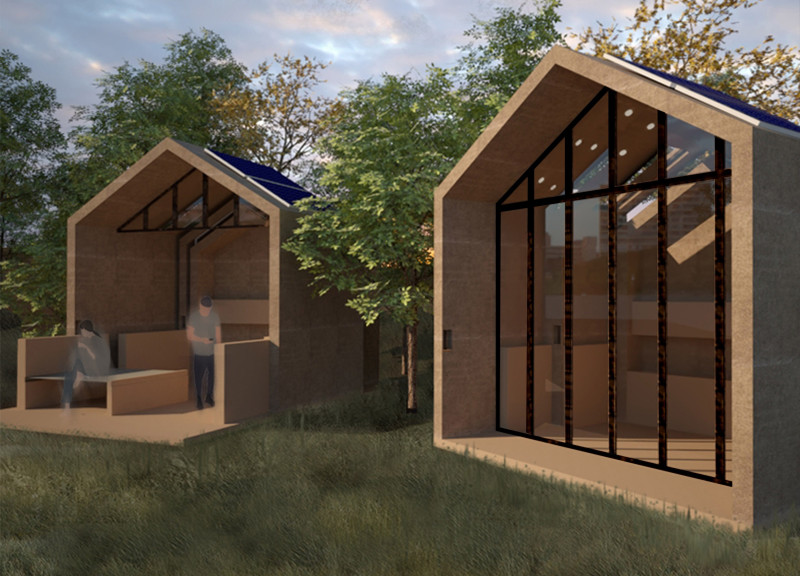5 key facts about this project
The E.B.L. microhome is an innovative residential design located in the Mediterranean. It focuses on flexibility and sustainability. Inspired by how bees construct their hives, the microhome offers a unique approach to living, allowing occupants to adapt their spaces based on their needs. The design aims to achieve complete reliance on green energy while maintaining a zero carbon footprint.
Design Concept
The main feature of the E.B.L. is its retractable cork shell. This shell can change shape and configuration, making it an adaptable structure. The ground platform, fixed in place, has low walls that incorporate canvas rolls of different sizes. This design allows for a flexible interaction between the home and its environment. The building's exterior and interior can shift in response to user demands.
Spatial Organization
Inside, the microhome is arranged into three defined zones. The entrance and bathroom form stable modules, while the sleeping and living areas are designed to be flexible. Occupants can move the retractable sections according to their needs, creating spaces that can be used for various activities. This setup encourages personalized living, giving users options to tailor their surroundings.
Materiality
Sustainability drives the choice of materials in the microhome. The cork shell is selected for its insulating properties and durability, enhancing energy efficiency. Canvas rolls serve as adaptable partitions, allowing spaces to change as needed. The use of timber elements adds another layer of natural material to the environment, contributing to a tactile and warm atmosphere.
Technological Integration
A smart application plays a key role in connecting residents with the home’s features. This technology enables users to create furniture, adjust the retractable shell, and monitor weather conditions, all from their devices. The integration of technology signifies an understanding of modern living, supporting functionality in everyday life.
The undulating shape of the retractable shell creates a visual connection between the interior and outdoor environments, reinforcing the project's link to the Mediterranean landscape.



















































